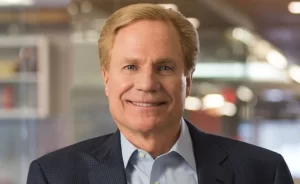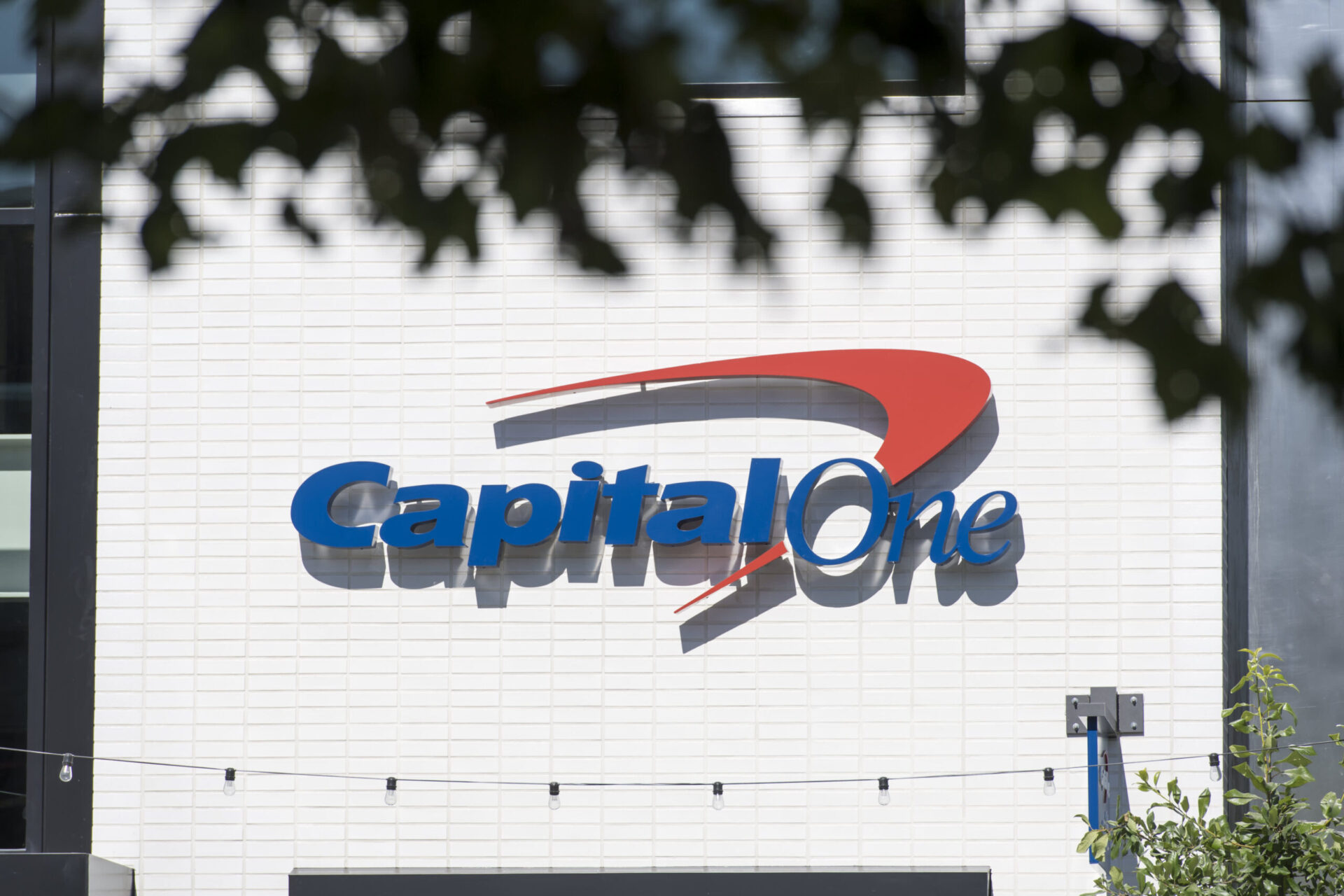In the ever-evolving realm of finance, Capital One emerges as a trailblazer, redefining traditional banking paradigms through a potent blend of innovation, data-driven insights, and an unwavering commitment to customer empowerment. Since its inception, Capital One has stood at the forefront of financial transformation, propelling the industry into a new era marked by digital prowess and personalized experiences.
Capital One Financial Corporation, headquartered in McLean, Virginia, is an American bank holding company with a specialized focus on credit cards, auto loans, banking, and savings accounts. Its primary operations are within the United States. It ranks among the largest banks in the country, holding the distinction of being the third-largest issuer of Visa and Mastercard credit cards and standing as a major player in the American car finance sector. It is one of the largest credit card issuers in the United States, and it also offers a variety of other financial products and services, such as banking, savings, and investment products.
With around 750 branches, including 30 café-style locations, and a network of 2,000 ATMs, Capital One’s presence is robust. Notably, it secures the 106th position on the Fortune 500 list and holds the 15th spot on Fortune’s esteemed “100 Best Companies to Work For” ranking. Its influence extends across the United States, Canada, and the United Kingdom, solidifying its global reach.
A trailblazer in the financial industry, Capital One played a pivotal role in pioneering widespread credit card marketing during the 1990s. The company’s operations are structured into three divisions: credit cards, consumer banking, and commercial banking. By March 2022, the company’s financial status included loans receivable totaling $114 billion from credit cards, $75 billion from auto loans, and $85 billion from commercial loans.
Capital One’s legacy of innovation echoes throughout its journey. From introducing user-friendly online banking platforms that made managing finances accessible to all, to pioneering innovative credit card rewards programs that resonate with modern consumers, the company has consistently been at the forefront of shaping the future of banking.
In addition to credit cards, Capital One also offers a variety of other financial products and services, such as:
- Banking: Capital One offers checking accounts, savings accounts, and money market accounts.
- Savings: Capital One offers certificates of deposit (CDs) and savings bonds.
- Investment products: Capital One offers mutual funds, exchange-traded funds (ETFs), and investment advisory services.
- Loans: Capital One offers personal loans, auto loans, and student loans.
At its core, Capital One is driven by the mission to empower individuals and businesses to make informed financial decisions. Through cutting-edge tools, educational resources, and transparent practices, the company empowers its customers to navigate the complex world of finance with confidence.
Capital One is a publicly traded company, and its stock is listed on the New York Stock Exchange (NYSE). The company has a market capitalization of over $39 billion.
As we navigate the remarkable journey of Capital One, we unravel a narrative that encapsulates the spirit of innovation, customer-centricity, and the bold pursuit of reimagining the financial experience. Capital One’s story resonates as a testament to the potential of merging data-driven insights with a dedication to delivering meaningful, transformative financial solutions that stand as a testament to the power of innovation in shaping the financial landscape of tomorrow.
Success Story of Capital One
In the realm of financial services, Capital One has etched its name as a trailblazer, a company that not only adapted to changing times but also redefined the landscape with innovative strategies and customer-centric approaches. From its inception to its present-day position as a global financial powerhouse, the Capital One success story is one of resilience, innovation, and a relentless commitment to meeting customer needs.
Monoline Bank (1994 to 2004)
Capital One, based in Richmond, Virginia, was initially a division of Signet Financial Corp. The spin-off of this credit card division, known as OakStone Financial at the time, was announced on July 21, 1994, under the leadership of Richard Fairbank as CEO. Subsequently, in October 1994, the subsidiary was rebranded as Capital One, and the spin-off concluded in February 1995.

During its early years, Capital One adopted a monoline banking approach, which entails generating revenue exclusively from a single product category—in this case, credit cards. While this strategy can be vulnerable to economic downturns, Capital One managed to achieve relative success as a monoline bank. This was attributed to its pioneering use of data collection and analysis, enabling the creation of personalized credit offers targeted directly at consumers based on their demographic profiles.
Diversifying through Innovation: Capital One’s Expansion into Auto Loans (1996–Present)
Capital One embarked on a transformative journey in 1996, transitioning from relying solely on teaser rates to adopting innovative techniques that would attract a broader customer base and redefine its business model. This strategic shift was driven by the need to compete more effectively against rivals offering higher loan balance ceilings and no-annual-fee accounts. The company initiated creative approaches such as co-branded, secured, and joint account credit cards to entice customers.
The pivotal year of 1996 saw Capital One’s application for establishing Capital One FSB gain federal approval. This marked a significant milestone as the company could now hold and lend deposits related to secured cards and venture into issuing automobile installment loans.
Recognizing the potential of international markets, Capital One expanded its operations to the United Kingdom and Canada. This move extended the company’s credit card offerings to a global audience. By 1997, Capital One’s prowess was evident, with $12.6 billion in credit card receivables and a customer base exceeding nine million. Such accomplishments earned the company a spot in the esteemed Standard & Poor’s 500, and its stock price surged to reach the $100 mark in 1998.
A pivotal step in its expansion journey occurred in July 1998, when Capital One acquired Summit Acceptance Corporation, bolstering its presence in the auto financing sector.
As 1999 dawned, Capital One sought to diversify beyond credit cards. CEO Richard Fairbank unveiled plans to leverage the company’s expertise in consumer data collection to offer an array of services, including loans, insurance, and phone services.
In 2001, Capital One acquired PeopleFirst Finance LLC, a move that culminated in the rebranding of both entities as Capital One Auto Finance Corporation in 2003, strengthening the company’s foothold in the automotive financing domain.
The collaboration between Capital One and the United States Postal Service (USPS) yielded notable developments. A negotiated services agreement (NSA) for bulk mailing discounts was proposed in late 2002. Although the agreement extended into 2006, Capital One raised concerns about the terms in comparison to a competitor’s agreement. While initially filing a complaint, Capital One later withdrew it following a resolution with the USPS.
In a milestone move, Capital One acquired Onyx Acceptance Corporation in January 2005, further cementing its position as an automobile loan financing leader.
Through a series of strategic decisions and groundbreaking acquisitions, Capital One transformed from a credit card-centric entity into a versatile financial institution, extending its influence into the auto financing domain and beyond.
Broadening Horizons: Capital One’s Expansion into Retail Banking (2005–Present)
Steering its trajectory towards a diversified financial landscape, Capital One’s journey from 2005 onward witnessed a strategic evolution as it ventured into the realm of retail banking, significantly expanding its footprint and offerings. This strategic transformation marked a pivotal juncture in the company’s history.
In 2005, Capital One achieved a groundbreaking milestone by becoming the first monoline credit card issuer to acquire a bank. This marked its entry into the domain of retail banking as it welcomed Hibernia National Bank into its fold. The acquisition, accomplished through a blend of cash and stock valued at $4.9 billion, marked the company’s foray into this new territory.
Continuing this momentum, Capital One further bolstered its presence by acquiring North Fork Bank in 2006, a financial institution based in Melville, New York. The acquisition, valued at $13.2 billion in cash and stock, reinforced the company’s shift away from sole dependence on credit card operations.
One of Capital One’s strategic initiatives in 2007 included the acquisition of Netspend, a prominent player in the domain of prepaid debit cards, solidifying the company’s commitment to diversified financial services.
Amid the tumultuous 2007 subprime mortgage financial crisis, Capital One took strategic actions, including the closure of its mortgage platform, GreenPoint Mortgage, due to investor pressures. However, the U.S. Securities and Exchange Commission raised concerns about Capital One’s conduct during this period, alleging understated auto loan losses. The company eventually settled the matter, paying $3.5 million, without admitting to wrongdoing.
The subsequent years saw Capital One’s financial landscape undergo significant changes. It secured an investment of $3.56 billion from the United States Treasury through the Troubled Asset Relief Program, strengthening its position during a period of economic uncertainty.
Through a series of strategic acquisitions, Capital One expanded its presence across borders. Noteworthy acquisitions included Chevy Chase Bank, Hudson’s Bay Company’s private credit card portfolio, and ING Direct, which was rebranded as Capital One 360.
Capital One’s journey in diversification also encompassed partnerships with major brands such as Kohl’s, HSBC, and Walmart, as well as the introduction of innovative financial tools like the Isis Mobile Wallet payment system.
In 2021, the company introduced the Venture X travel rewards credit card, solidifying its commitment to innovation and meeting evolving customer needs.
The period from 2005 to the present stands as a testament to Capital One’s determination to evolve and adapt, extending its influence across various sectors of the financial industry and emphasizing its commitment to providing comprehensive and innovative solutions to its customers.
Navigating the Mortgage Market: Capital One’s Transition and Acquisitions
Responding to the dynamic landscape of the mortgage market, Capital One undertook strategic shifts and acquisitions to navigate the evolving financial environment.
In 2007, recognizing the challenges posed by the competitive low-rate environment, Capital One took the significant step of exiting the mortgage origination business. This move, led by President of Financial Services Sanjiv Yajnik, acknowledged the difficulty of generating profits in such conditions. The closure on November 7, 2017, involved the layoff of 1,100 employees and marked the second instance of such a decision. The first closure took place on August 20, 2007, when the GreenPoint Mortgage unit was shut down. Notably, GreenPoint Mortgage had become a part of Capital One through the acquisition of North Fork Bancorp Inc. in December 2006, a transaction valued at $13.2 billion. Interestingly, the company would later re-enter the mortgage industry through its acquisition of online bank ING Direct USA in 2011.
Capital One’s strategic journey also encompassed acquisitions that fortified its offerings. In May 2018, the company acquired Confyrm, an innovative digital identity and fraud alert service. This acquisition underscored Capital One’s commitment to enhancing security and providing advanced solutions to its customers.
In a separate instance, in November 2018, Capital One acquired Wikibuy, an innovative shopping comparison app and browser extension developed by an Austin, Texas-based startup. It’s important to note that Wikibuy is unrelated to Wikipedia/Wikimedia, and this acquisition emphasized Capital One’s efforts to enhance the shopping experience for its customers.
Throughout the years from 2006 to 2017, Capital One’s strategic decisions and acquisitions demonstrated its agility in adapting to the complexities of the mortgage market and its dedication to delivering comprehensive solutions and value to its diverse customer base.
The Capital One success story is far from reaching its conclusion. The company’s journey is characterized by its ability to anticipate trends, respond to challenges, and consistently innovate. As the financial landscape continues to evolve, Capital One remains at the forefront, driven by its foundational values of innovation, customer focus, and adaptability. Its journey is a testament to how a commitment to excellence and a vision for change can shape a thriving success story in the dynamic world of finance.
Also Read: Bank of America Success Story: History & Success Factors
To read more content like this, subscribe to our newsletter
Go to the full page to view and submit the form.


